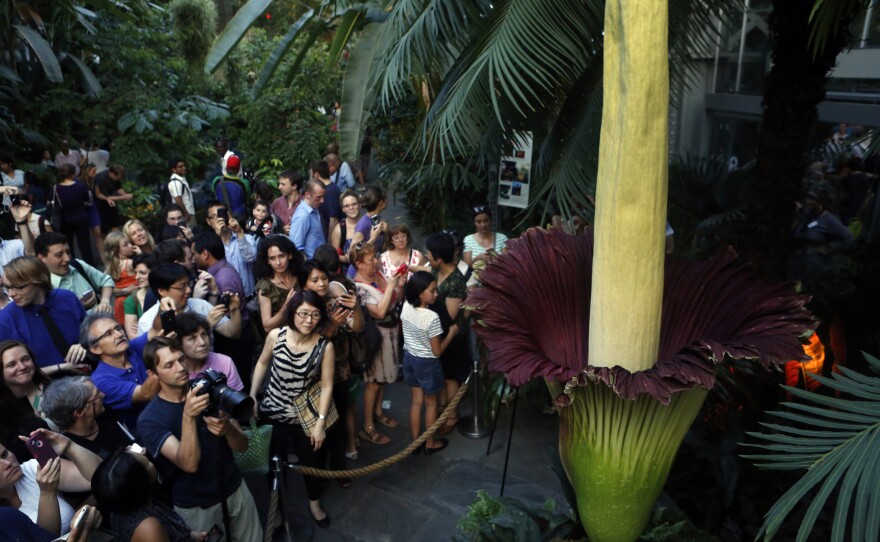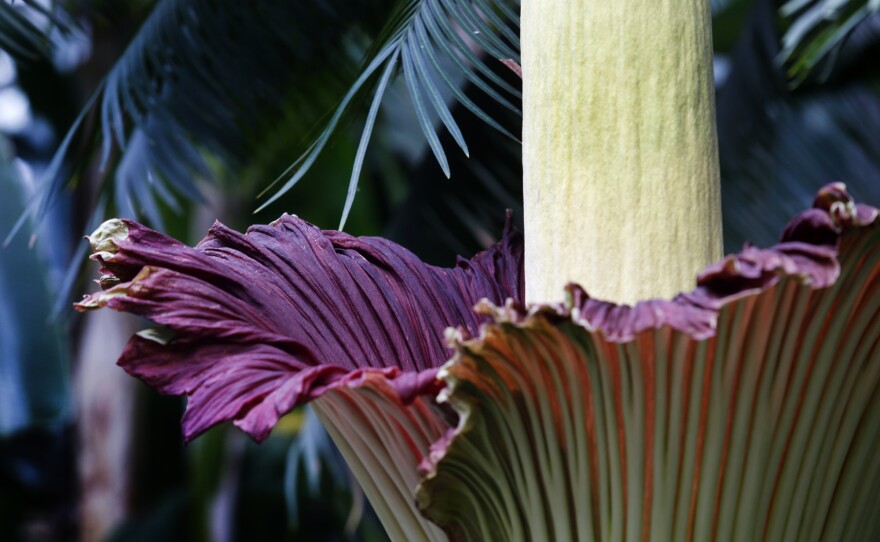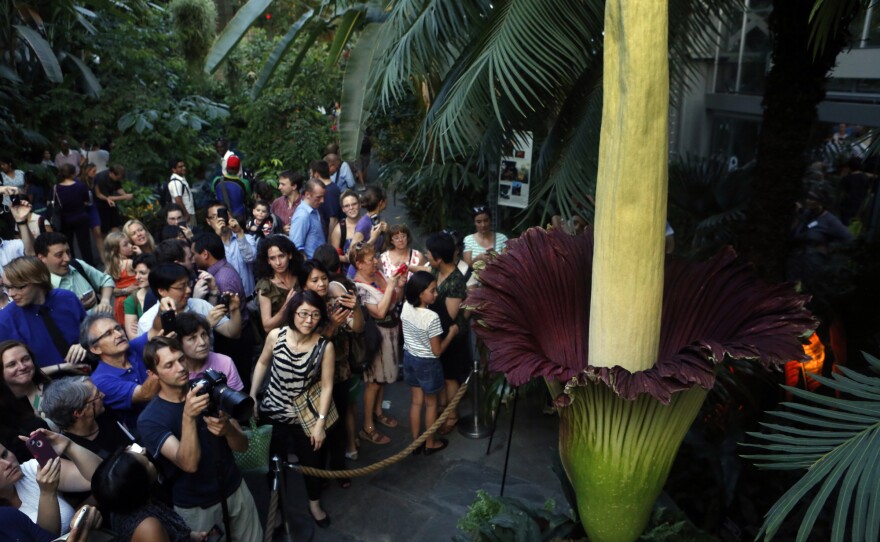















The line to see the thing that was supposed to smell like rotting flesh wrapped around the U.S. Botanic Garden in Washington, D.C., on Monday night. Most folks who braved the heat and hourlong wait weren't greeted with the overwhelming stench of death, but rather the smell of sweat and intense, intense humidity.
Kyle Wallick, a botanist with the gardens, said that the titan arum, known colloquially as the corpse flower, began emitting its signature odor on Sunday evening after the gardens closed. By Monday morning, though, the smell was gone.
Wallick says the smell, which he described as a "foul odor -- sort of the odor you get from a decaying carcass, roadkill if you will, or that odor you see on the bottom of a dumpster after a hot summer day," comes and goes in waves over the course of one to two days.
"It takes a lot of energy for the plant to produce the smell, so it puts it on reserve during the day, and will put out full strength later in the evening when the pollinators are available to it," he says. (It's not the only species to give off rank smells. The International Business Times has compiled a list of some other "awful-smelling organisms.")
The smell resembles dead or decaying flesh, and it attracts a carrion beetle that normally likes to lay its eggs on the rotting corpses of dead mammals. In this case, though the beetles act like pollinators as they travel from flower to flower.
The titan arum is native to the tropical rain forests of Sumatra, Indonesia. It was first discovered in 1878, and Wallick says there have been only 68 occurrences of the plant flowering in the United States since then. That's because the plants don't bloom on a regular cycle -- the length of time between blooms ranges from a few years to a few decades.
The corpse flower that's on display at the U.S. Botanic Garden at the base of Capitol Hill in Washington is "a fairly young plant," Wallick says. It's been growing since 2006, and this is the first time it's in bloom. The 8-foot-tall plant weighs in at around 250 pounds.
Alice Chen, a plant biologist who works at a law firm in Washington, was visiting the garden with her daughter Adie.
"It's a very strange evolutionary strategy to invest 10 years to make a flower that only lasts one or two days," she says. "That's very unusual in the plant kingdom."
Its method of pollination, she said, is equally unusual. "These pollinators that [titan arum] uses are not traditional pollinators -- traditionally, they are decomposers that look for dead sources of meat. So for the plant to use these decomposers as pollinators is a very unique and sort of different ecological role for these insects."
Edna Bargan, who called the plant majestic and exotic, waited in line for 45 minutes to see it Monday night.
"I just had to be here, despite the long lines," she says. "I'm very, very excited to see it. I'm all sweaty, but it's worth it. It's absolutely worth it. It's actually an ugly flower. But it's wonderful."
Copyright 2013 NPR. To see more, visit www.npr.org.






